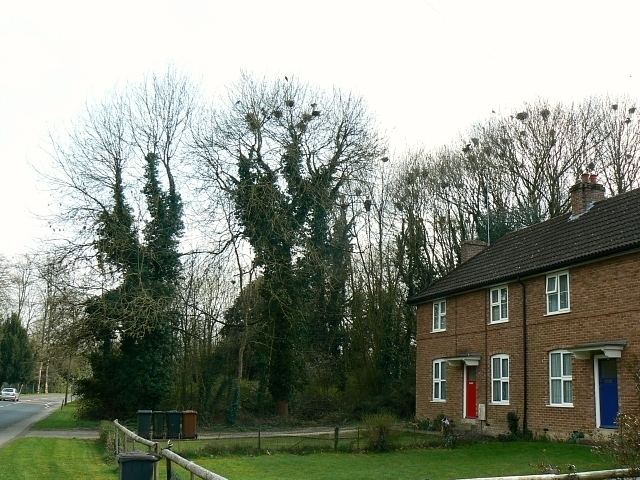Local time Friday 11:05 PM | ||
 | ||
Weather 9°C, Wind SE at 8 km/h, 97% Humidity | ||
Enham Alamein is a village and civil parish about 2½ miles north of Andover in the north of Hampshire, England. It was named Enham until 1945 and previously Lower Kings Enham.
Contents
Map of Enham Alamein, Andover, UK
There are three population areas, in order from north to south, now named Upper Enham (formerly Upper King's Enham), Enham Alamein (formerly Lower Enham and earlier Lower King's Enham) and Knight's Enham. At the 2011 Census the population of the civil parish was 804.
Knight's Enham is now part of the north edge of suburban spread of Andover, about a kilometre south along the A343 road from the current site of Enham Alamein. This is a hamlet of 3 or 4 houses and a church with a first recorded date of 1241.
The village of Enham was one of the original "Village Centres" chosen for the rehabilitation of injured and war-disabled soldiers returning from the front line of World War I. Originally funded by King George V in 1919, the Village Centre became a hub for the care of these soldiers where they were retrained in new trades such as basketry, upholstery, gardening services and other trades. This formed the basis of the charity which still exists today and owns the majority of Enham Alamein village, Enham Trust, providing care for civilians with disabilities.
Enham
The spelling Anglo-Saxon "Eanham" is recorded from the year 1008, pointing to ēan-hām = "lamb homestead" or ēan-hamm = "enclosure, for the raising of lambs".
There is a speculation that the "raising of lambs" refers to the rebirth of England under the one Christian God, as decreed in the Enham Codes written in the year 1008 at what later became Kings Enham (Upper and Lower), the royal estate of the 1008 lawcode and known as such in the later middle ages.
Of particular interest is the meeting of the Witan including Bishop Wulfstan and King Aethelred II at Upper (Kings) Enham on 16th May 1008. ). This law-making council of 40 nobles and around 360 retainers, put into draft a decree detailing the social ordering of England and to bring England as a whole under one Christian God, One King, and giving all men the right to law. These laws were aimed at bringing the populace together against the Viking raiders and are referred to as "the Enham Codes" According to Cambridge University, the meeting of the Witan was held at what later became Kings (Upper) Enham on the high ground along what is now MacCallum Road (previously Enham Lane) at Home Farm, (previously Kings Enham Farm).
At Home Farm there are Neolithic, Bronze Age, Iron Age, Roman, Anglo-Saxon and medieval deposits indicating consistent habitation, with at least one Roman villa confirmed as significant by Andover Museum, and a clear boundary ditch locally known as "the valley". Other deep earthworks can be remembered in living memory before they were filled in to make way for modern farm machinery.
Early records are:
Alamein
Much of its land had to be sold to pay expenses during the 1920s and 1930s, for example in 1934 it sold 232.462 acres as Home Farm.
Some of its patients remained there and set up in jobs such as carters, hauliers, market gardeners and dairy farmers.
In World War II many of the injured from the Battle of El Alamein were brought back to the UK and to the recovery centre in Lower Enham. This close association of servicemen and the village continued during and after the war.
In November 1945, two public subscriptions in Egypt raised £250,000 (worth around £6 million as at AD 2010), to thank Britain for ridding their country of the Axis forces. A small part went to build a new UN Forces Sports Club in Gezira in Cairo; most was given to the charity Enham to care for disabled ex-servicemen. This greatly improved the charity Enham's finances, and let them build their disabled ex-servicemen's centre as it is. In thankfulness for this the component "Alamein" was appended to the village's name.
In Enham Alamein there is still the charity "The Enham Trust", a leading disability charity supporting people in their transition towards living lives of choice, control and independence, providing personalised care and living, learning and working opportunities. There is a Heritage Trail around the village where people can read about the history of the Enham Trust and also about the Jane Austen connection. There is also a Childrens Treasure Hunt that the family can take part in.
Arabic Al `Alamain اَلْعَلَمَيْن means "the two flags".
